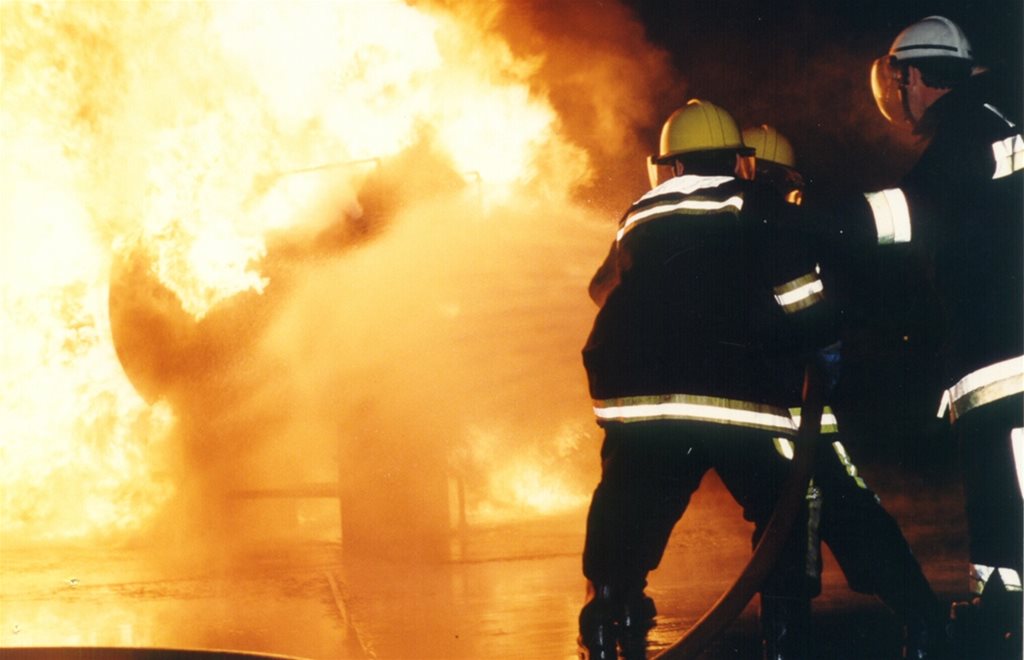In the first of this two part series, Jean-Simonis Engela reveals the hazards and risks faced by trainers of compartment fire behaviour
TRAINING IN compartment fire behaviour is intended to enable firefighters to perform effectively and safely during carbonaceous burning in operational fires. This training is as realistic as possible and as close to conditions experienced or anticipated in an operational fire within the community area that is serviced by the fire station.
Live fire training houses are therefore extremely hazardous environments with high heat loads, high humidity, poor visibility and smoke. There are approximately 300 compartment fire behaviour instructors (CFBIs) in the UK and they experience this environment around ten times more frequently in the course of their work than other firefighters1.
Fire and rescue authorities and managers must balance their operational responsibilities to protect the public and property with meeting their health and safety at work responsibilities for staff. As part of their responsibility to the wider public, firefighters need to develop the skills necessary for safely and effectively extinguishing operational fires in what are sometimes ‘extremely hazardous, emotionally charged and fast-moving situations’2.
CFBIs are tasked with developing these skills within the fire and rescue services (FRSs). Though not all aspects of this physically hostile working environment routinely faced by CFBIs can be controlled or mitigated, fire authorities must recognise by law their obligations to safeguard the health and safety of their CFBI employees.
Risk assessment of the hazards faced by instructors in the course of their work, control measures, learning from incidents, health surveillance and so on are critical components for fire authorities, which must strike the balance between their duty to protect the health and safety of instructors and achieving operational competency of their workforce.
Within the scope of this first article, it is not possible to outline all the hazards and risks that are faced by instructors in the workplace, or give detailed consideration to risk control measures. The latter will be the focus of the second article, which will be published in a future issue. This first part will reflect insights obtained from semi structured interviews with 14 instructors at the Live Fire National Training Centre in New Zealand3.
These interviews concerning their lived experience and health concerns during working practices were complemented by an informal telephone interview with CFBIs based in Cardiff and a worksite visit to the Live Fire Training Unit in Cardiff Gate Training and Development Centre.
Interviews with instructors in New Zealand and the informal discussions with CFBIs in Cardiff both reflected heightened concern around any long term risks of frequent fire exposure and administrative controls for heat strain mitigation. In addition, certain insights around fire house engineering, appropriate use of flash hoods in the firefighting personal protective equipment (PPE) ensemble, and the nature of acute burns sustained during live fire training exercises may not have been realised without this field work.
Employers have a duty under health and safety law in the UK, in addition to public health advice, to take every reasonable precaution to reduce the risk of COVID-19 to firefighters and the instructors who train them4.
A recent study has estimated5 that approximately 10% of workers in the US who are employed within protective service occupations (including firefighters) are exposed to infection or disease at least once a week. Interfacing with colleagues and trainees and being confined to enclosed spaces with them for prolonged durations is an occupational characteristic of firefighting and compartment fire behaviour training.
Guidance issued by the National Fire Chiefs Council (NFCC) endeavours to support fire stations and training centres to work safely during the COVID-19 pandemic. The guidance, in order of priority, outlines risk mitigation measures to reduce the risk of COVID-19 to employees while remaining operational and continuing with workforce training6.
Although this current hazard is not explored in what follows, it is flagged here, and it is worth noting that CFBIs report that social distancing measures in particular have resulted in the need to reduce trainee numbers, as well as increased time spent in PPE during training evolutions. This may reduce the exposure risk to COVID-19 for instructors, but conversely it increases heat strain and the risk of heat related illness.
Hazards and risks
Heat load
Measuring the total heat load to which CFBIs are exposed in live fire training evolutions includes the measurement of naturally occurring and firehouse specific environmental factors; the metabolic heat generated by the instructor during the course of their work; and the PPE an instructor is wearing.
The environmental factors include air temperature, water vapour pressure (humidity), air movement/velocity, and radiant heat exposure. Measurement of these thermal stressors is complicated and requires industry specific equipment and techniques. In practice, thermal environmental factors are measured using integrated thermal technologies, and metabolic heat load calculations rely mostly on estimations based on task analysis or tables of energy expenditure7.
Human thermoregulation maintains a core body temperature within half a degree of approximately 37.5°C. There are four primary ways in which an instructor’s body will attempt to offset the heat load gained from the environmental and metabolic thermal stressors in a compartment fire training scenario. These are convection (movement of air), radiation (emission of energy), vapourisation (exhaled air), and evaporation (sweat loss).
Evaporation of sweat constitutes the main physiological parameter available to the human body by which it can maintain equilibrium – particularly in the context of PPE and firehouse conditions. When the body’s physiological response to these thermal stressors is no longer capable of maintaining a stable body temperature (heat stress), symptoms of heat related illness may become apparent8.
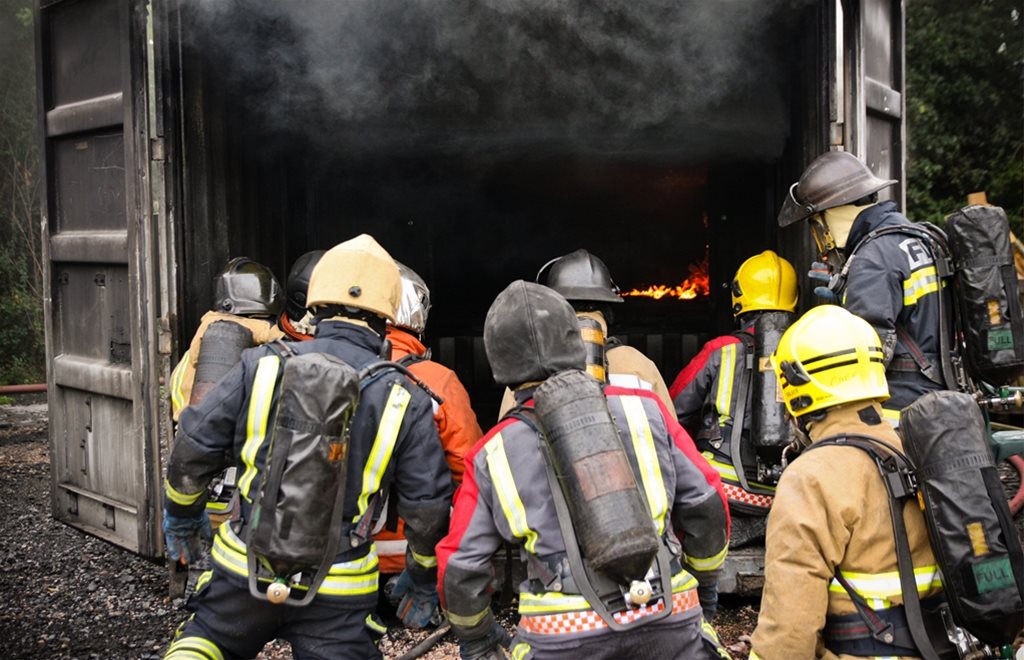
Acute heat disorders
Heat related illness continues to progress on a spectrum. Heat exhaustion describes symptoms associated with the excessive loss of body fluids and electrolytes from physiological sweating, with associated reduction in intravascular volume and perfusion pressure. CFBIs may notice a general malaise and irritability progressing to nausea, headache, polydipsia, tachycardia, signs of respiratory distress and light headedness among others, and eventually loss of consciousness.
It is at this stage, when an instructor has a syncopal episode (such as fainting), that heat syncope has occurred. If an instructor does not regain consciousness within minutes of fainting (following their removal from thermal stressors, leg and head elevation, cooling methods and PPE doffing), heatstroke should be considered and immediate hospital evacuation arranged while cooling methods continue.
Coma and death are unfortunate outcomes of heatstroke without early recognition of warning signs or efficient cooling methods being instigated, or after delays in expediting medical care to an intensive care setting9.
Chronic heat exposure
As mentioned earlier, fieldwork undertaken in New Zealand3 and discussions with CFBIs revealed concerns about the long term effects of frequent heat exposure during live fire training exercises.
In addition to the conventional measurements of both LDL (low density lipoprotein) and HDL (high density lipoprotein), inflammatory biomarkers CRP (C-reactive protein) and IL-6 (Interleukin-6) have been widely accepted as predictors of cardiovascular events, with vascular inflammation linked to the initiation and progression of atherosclerosis3.
Haematological and inflammatory marker concentrations such as cortisol and IL-6 are frequently used to assess physiological strain associated with thermal stressors10. A 1998 study11 reviewed stress hormone response to heat (as well as exercise), identifying the secretion of cortisol and catecholamines under these conditions.
Increases in the core body temperature of Australian firefighters on completion of work were associated with an elevated leukocyte count, platelet count and TNFa (tumour necrosis factor alpha), with platelets still elevated 24 hours after completion of work12. Two recent studies specific to CFBIs reported a 33 to 45% increase in the inflammatory cytokine IL-6 over the course of a four week training programme13 and a statistically significant increase in IL-6 and the cardiac biomarker troponin T (cTnT), a marker of cardiac injury14.
Of interest here is that both studies reported an overall decrease in the inflammatory marker CRP. Symptoms of ill health including fatigue, sleep disturbance, agitation and headaches were reported in 41% of CFBIs since their career started15. When occurring in the context of excessive physiological strain induced by overtraining, such symptoms may be linked to chronic systemic inflammation16. A similar systemic inflammatory response could be hypothesised therefore in chronic heat exposure.
A pilot case controlled study17 investigated the biomarkers and physiological status associated with cardiovascular disease among seven CFBIs. The seven instructors did 40 minutes of live fire training, and seven instructors in the control group performed similar training exercises while also wearing PPE.
The vital signs and biomarkers of both groups were recorded prior to and following training for 24 hours. The blood pressure, heart rate and temperature of instructors in the live fire training group were higher than in the control group (P < 0.05). When compared to the control group, biomarkers (including IL-6 and cortisol) were still elevated both immediately following and 24 hours post training in the live fire training group. The authors concluded that these findings warranted further investigation.
Following an up to date review of the literature, a 2020 study1 sought to establish if the number of ‘hot wears’ (heat exposure during live fire training) in a month among CFBIs is associated with elevations in haematological and inflammatory markers known to be predictors of cardiovascular events.
For the study, 110 personnel from the UK FRSs were recruited, of which 53 were CFBIs. Compared with other firefighters, an analysis of the FBC (full blood count) on venous sampling showed statistically significant increased levels of haematological markers (including platelets and neutrophils) among CFBIs.
Analysis of other biomarkers revealed that CFBIs had higher levels of cardiac troponin, interleukins (IL-6 and IL-1ß) and CRP when compared with firefighters (hypothesis one). Pearson’s chi-squared statistical analysis demonstrated that CFBIs were 7.78 times more likely to experience symptoms of ill health compared to firefighters (hypothesis four).
In combination with the findings reported in 201613, a positive correlation using a multiple regression analysis was demonstrated between number of ‘hot wears’ and IL-6 levels (hypothesis two). Some training centres in the UK informally suggest a ‘hot wear’ limit of nine per month15. An analysis of this limit indicates – once remodelled with only significant predictors – that CFBIs over this limit are more likely to be at increased risk of cardiovascular events associated with inflammatory cytokines such as IL-6 (hypothesis three).
CFBIs over the limit of nine ‘hot wears’ were also 15.74 times more likely to experience the symptoms of ill health described above. In view of these findings, strategies for mitigating the long term cardiovascular risk associated with live fire training – by modifying the number of ‘hot wears’ undertaken by CFBIs in a month – is given further consideration under administrative controls and recommendations provided.
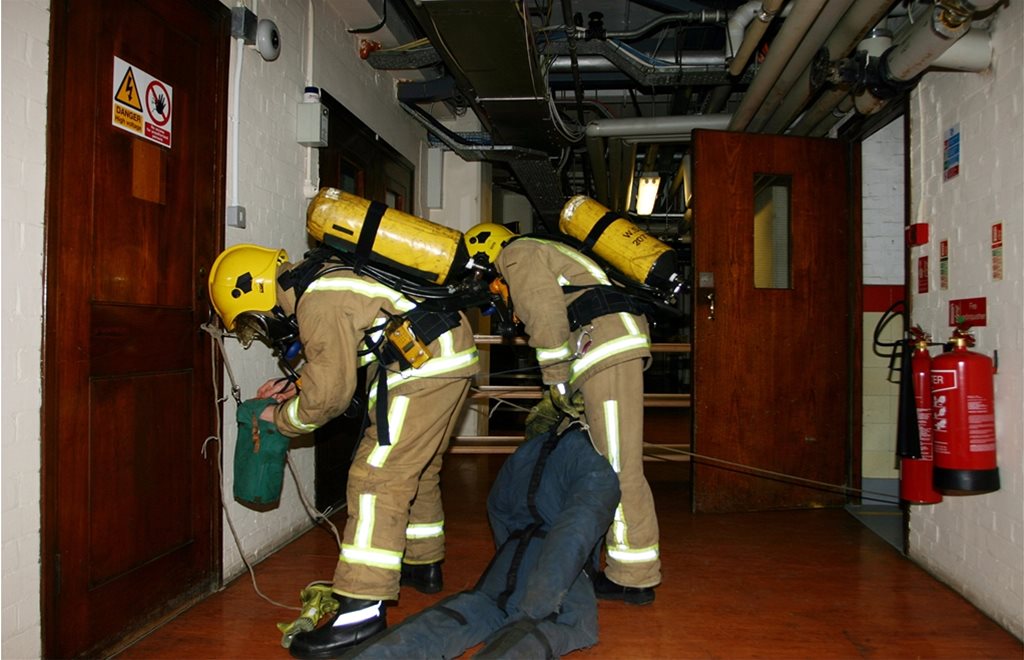
Acute burns
Temperatures can range from 100°C to 250°C during compartment fire training, depending on the type of fuel load employed. When training includes practising and observing the use of water on the fire, steam is generated, increasing heat exposure and risk of burns18. Fire, heat and steam resistant PPE must be worn, and it is commonly understood that exposed areas of skin risk acute burns7.
However, what was not apparent in the literature concerning PPE and acute burns was the nature of the burns CFBIs report as most commonly occurring in live fire training exercises. Although PPE is fire and fluid resistant, standard issue flash hoods are simply a ‘cotton balaclava’. Although this makes them breathable and reduces risk of heat strain, they are permeable to steam and sweat.
CFBIs report therefore that when acute burns do occur, it is frequently when the flash hood is damp from sweat or steam seepage, and adhering to the adjacent skin. For example, a ‘scalding’ was previously sustained in a CFBI with male pattern hair loss.
Other effects
Prickly heat, contact dermatitis and secondary dermatological fungal infections are reported in addition to heat related temporary infertility in males8.
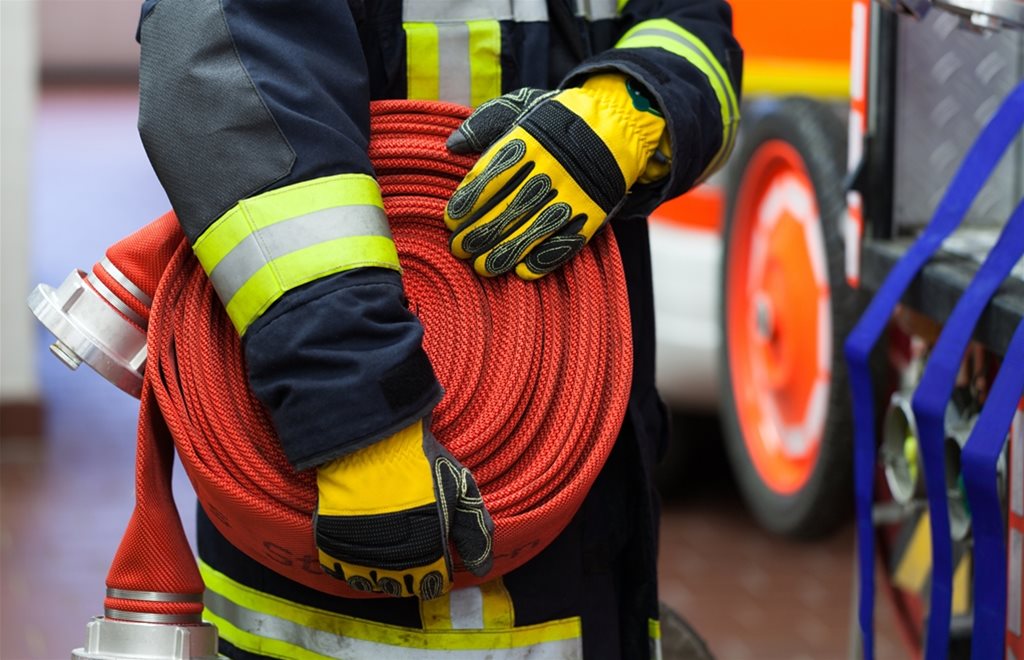
Smoke and airborne chemicals
Depending on the type of fuel load used during live fire training, toxic airborne chemicals may be present in the atmosphere within the firehouse and its immediate surroundings. An article19 updating on a previously studied group of almost 30,000 US based firefighters reaffirmed that when compared to the general US population, mortality from cancer among firefighters had a modestly elevated incidence.
In particular, a positive relationship between exposure and response were noted for deaths from lung cancer and leukaemia. In July 2016, the Fire Fighter Cancer Cohort Study, a US based, transdisciplinary, observational study over 30 years of 10,000 firefighters was commissioned to further collect data on exposure of firefighters to carcinogens and their effects20.
Most substances’ exposure limits are based on inhalation as the entry route to the human body. Systemic toxicity however could also be caused by peripheral absorption when substances penetrate the skin – with the face, neck and throat considered particularly permeable21. As already mentioned, flash hoods – the standard issue PPE intended to protect these areas – are subject to seepage from sweat and steam and it is therefore conceivable that they offer little reliable protection from airborne chemicals.
It should also be noted that CFBIs frequently remove their self contained breathing apparatus (SCBA) or respirators once outside the firehouse during or shortly following a live fire training exercise, where inhalation of carcinogenic chemicals as a route of entry is still possible21. A 2015 study22 advised that firefighters should be made aware of the risk of inhalation exposure to VOCs (volatile organic compounds) when doffing their PPE following firefighting, and suggested precautions be taken to reduce dermal absorption.
The study proposed that ‘off gassing’ of VOCs from PPE following firefighting are responsible for the more than five fold increase in concentrations of certain VOCs (including styrene, benzene and cyclohexane) detected on placing the used PPE inside enclosures for air sampling, and the more than twofold increase on testing the exhaled breath of firefighters post exposure.
In the specific context of training fire related smoke exposure for instructors, a 2019 study23 reported a 30 fold increase of the polycyclic aromatic hydrocarbon (PAH) 1-hydroxypyrene in the urine of instructors following live fire training. This was 3.5 times greater than median levels measured among other firefighters. Following a training scenario, the breath concentrations of the PAH benzene were two to seven times higher.
Almost all the PAH metabolites detected in the urine of instructors increased at three hours post exposure, and instructors accumulated PAHs with each successive scenario. The authors concluded that because inhalation exposure was adequately controlled during the study, dermal absorption seemed a likely route of systemic absorption.
Other studies have reported dermal absorption as a likely exposure route of contaminants24,25,26. This highlights the inadequacy of permeable flash hoods against airborne contaminants and is further addressed in the follow up article on PPE risk control measures
Jean-Simonis Engela is an academic GP fellow in the Division of Population Medicine at Cardiff University
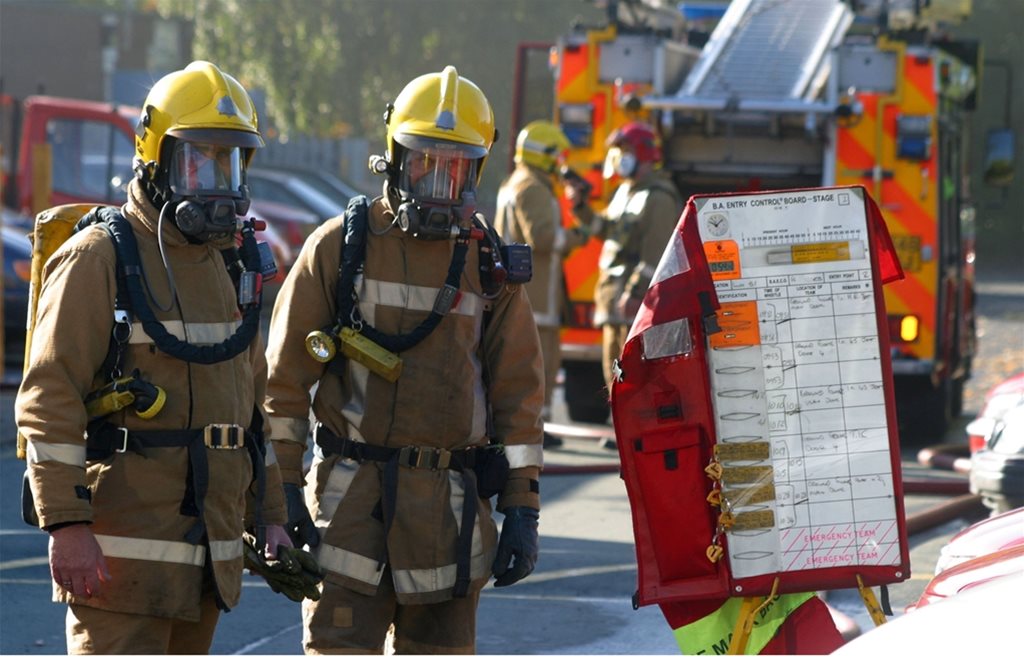
References
- Watkins ER, Hayes M, Watt P, Renshaw D, Richardson AJ, ‘Extreme occupational heat exposure is associated with elevated haematological and inflammatory markers in Fire Service Instructors’, Experimental Physiology, 2020.
- Striking the balance between operational and health and safety duties in the Fire and Rescue Service, Health and Safety Executive (HSE).
- Moriya J, Critical roles of inflammation in atherosclerosis, Journal of cardiology, 2019; Mündel T, Legg S and Laird I, Impact Of Live Fire Training On National Training Centre Based Instructors, Report No. 176. Palmerstown North: Fire and Emergency New Zealand, 2020.
- Talking With Your Workers About Preventing Coronavirus, HSE, https://www.hse.gov.uk/coronavirus/assets/docs/talking-with-your-workers.pdf
- Baker M, Peckham T and Seixas N, ‘Estimating the burden of United States workers exposed to infection or disease: A key factor in containing risk of COVID-19 infection’, PLOS ONE 15(4), 2020.
- Working safely during Covid 19 in fire service places of work – operational and non-operational, NFCC, https://www.nationalfirechiefs.org.uk/COVID-19
- Occupational Exposure To Heat And Hot Environments. Criteria for a Recommended Standard, National Institute for Occupational Safety and Health (NIOSH).
- Health Management Of Compartment Fire Behaviour Instructors, Chief Fire Officers Association.
- Baxter P and Hunter D, Hunter’s Diseases Of Occupations, 2010.
- Wright HE, McLellan TM, Stapleton JM, Hardcastle SG, Kenny GP, ‘Cortisol and interleukin-6 responses during intermittent exercise in two different hot environments with equivalent WBGT’, Journal of Occupational and Environmental Hygiene, 2012.
- Brenner I, Shek P, Zamecnik J and Shephard R, ‘Stress Hormones and the Immunological Responses to Heat and Exercise’, International Journal of Sports Medicine, 1998.
- Walker A, Keene T, Argus C, Driller M, Guy J and Rattray B, ‘Immune and inflammatory responses of Australian firefighters after repeated exposures to the heat’, Ergonomics, 2015.
- Watt PW, Willmott AGB, Maxwell NS, Smeeton NJ, Watt E and Richardson AJ, ‘Physiological and psychological responses in Fire Instructors to heat exposures’, Journal of Thermal Biology, 2016.
- Watkins ER, Hayes M, Watt P and Richardson, AJ, ‘The acute effect of training fire exercises on fire service instructors’, Journal of Occupational and Environmental Hygiene, 2019.
- Watkins ER, Hayes M, Watt P and Richardson AJ, ‘Fire service instructors’ working practices: A UK survey’, Archives of Environmental & Occupational Health, 2018.
- Smith LL, ‘Cytokine hypothesis of overtraining: a physiological adaptation to excessive stress?’, Medicine & Science in Sports & Exercise, 2000.
- Kim SC, Lee HJ, Shin DM, Ku BS, Oh JH, Cho BJ, In H, Ma JY, ‘Cardiovascular risk in fire academy instructors during live-fire simulation activity’, Annals of Burns and Fire Disasters, 2018.
- ‘Guidance on The Management of Heat Stress During Training’, Fire Service Training Volume 4, The Stationery Office.
- Pinkerton L, Bertke S, Yiin J, Dahm M, Kubale T, Hales T, Purdue M, Beaumont J and Daniels R, ‘Mortality in a cohort of US firefighters from San Francisco, Chicago and Philadelphia: an update’, Occupational and Environmental Medicine, 2020.
- Fire Fighter Cancer Cohort Study, https://www.ffccs.org/
- EH40/2005 Workplace exposure limits, fourth edition, HSE.
- Fent K, Evans D, Booher D, Pleil J, Stiegel M, Horn G and Dalton J, ‘Volatile Organic Compounds Off-gassing from Firefighters’ Personal Protective Equipment Ensembles after Use’, Journal of Occupational and Environmental Hygiene, 2015.
- Fent K, Toennis C, Sammons D, Robertson S, Bertke S, Calafat A, Pleil J, Geer Wallace M, Kerber S, Smith D and Horn G, ‘Firefighters’ and instructors’ absorption of PAHs and benzene during training exercises’, International Journal of Hygiene and Environmental Health, 2019.
- Kirk K and Logan M, ‘Firefighting Instructors’ Exposures to Polycyclic Aromatic Hydrocarbons During Live Fire Training Scenarios’, Journal of Occupational and Environmental Hygiene, 2015.
- Laitinen J, Mäkelä M, Mikkola J and Huttu I, ‘Fire fighting trainers’ exposure to carcinogenic agents in smoke diving simulators’, Toxicology Letters, 2010.
- Wingfors H, Nyholm J, Magnusson R and Wijkmark C, ‘Impact of Fire Suit Ensembles on Firefighter PAH Exposures as Assessed by Skin Deposition and Urinary Biomarkers’, Annals of Work Exposures and Health, 2017.
